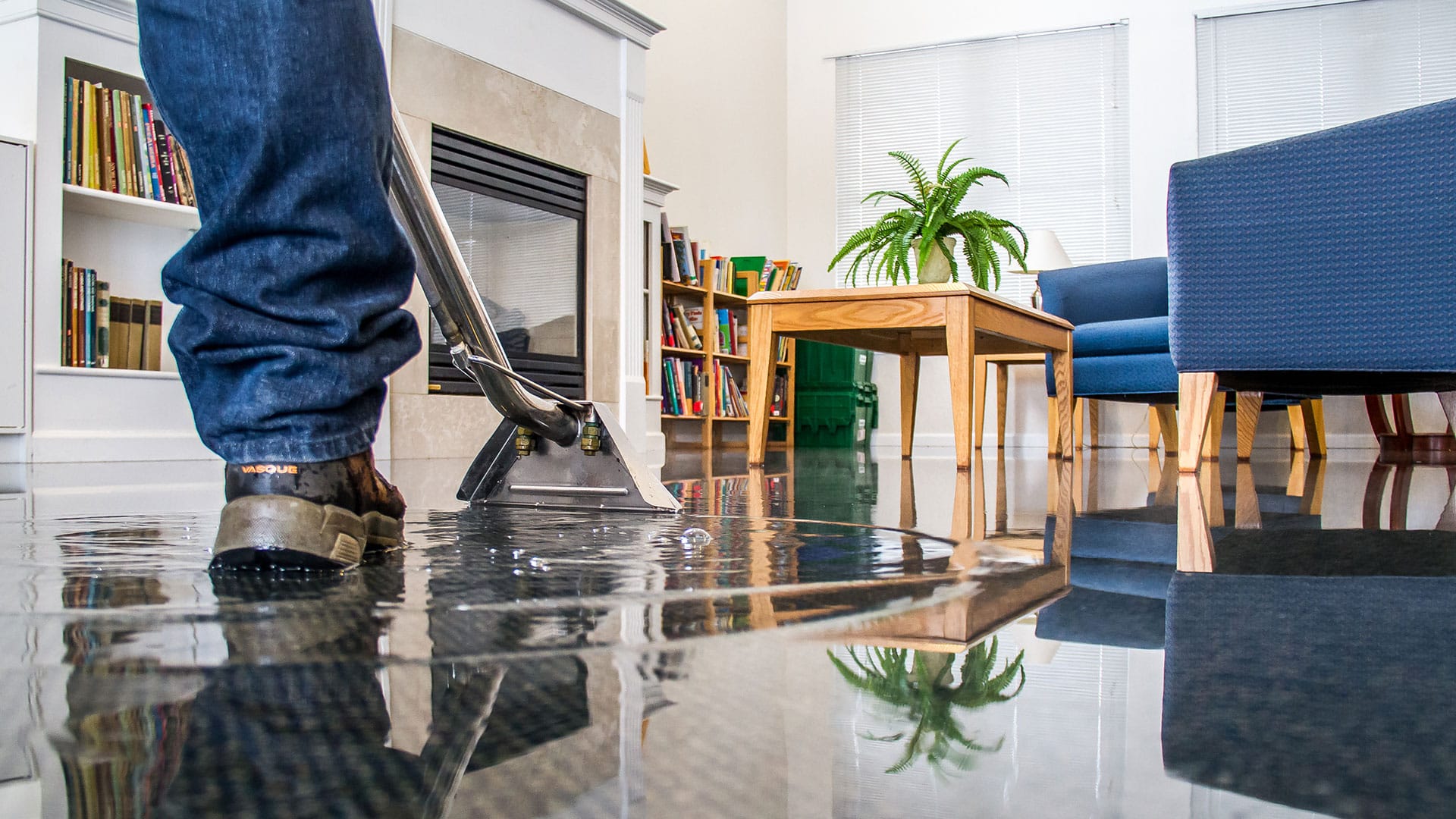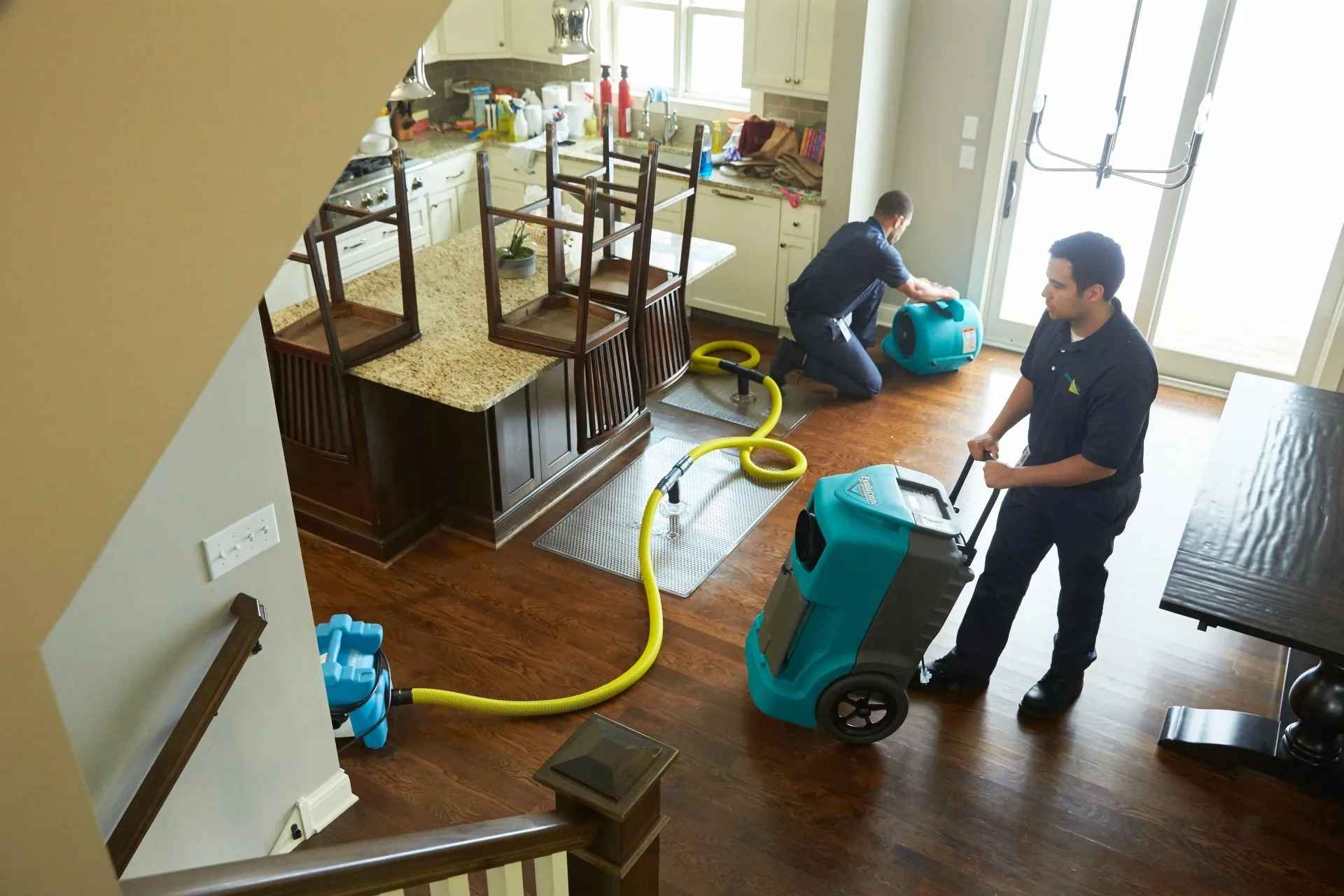Water Damage Restoration 101: Comprehending the Process and Cost
Water damage can strike unexpectedly, leaving property owners in a state of complication. Recognizing the remediation process is important for reliable recovery. From examining the damage to selecting the ideal company, each action impacts the overall result and expense. Aspects such as the kind of water damage and necessity also play a significant duty. What are the certain techniques used in restoration, and just how can one get ready for prospective expenditures?
Sorts Of Water Damage

Initial Analysis and Examination

Water Extraction Techniques
Adhering to the preliminary assessment, reliable water extraction methods are employed to alleviate damage and protect against additional problems. These strategies entail the use of specific devices such as completely submersible pumps and industrial-grade vacuums - Mold Remediation After Water Damage. The option of approach depends on the volume of water existing and the kind of materials impacted. For standing water, submersible pumps are typically used for quick removal, while vacuums are ideal for removing water from rugs and furniture. In addition, progressed methods like water extraction floor coverings may be utilized for hard-to-reach locations - Flood Cleanup Services. The goal is to eliminate as much water as feasible, minimizing the capacity for mold and mildew development and architectural damage. Prompt and efficient water extraction is essential in the overall water damage reconstruction process
Drying Out and Dehumidification Process
As soon as the water extraction is total, the drying out and dehumidification procedure comes to be essential to recovering the afflicted location. This phase usually uses industrial-grade dehumidifiers and air movers to properly lower wetness levels. The dehumidifiers draw in moist air, removing excess humidity, while air movers circulate air to speed up evaporation. Monitoring tools is typically used to track humidity and temperature levels, making sure excellent drying conditions. The duration of this procedure can vary depending upon the degree of the water damage and environmental variables. It is vital to completely dry all influenced products, including walls, floor covering, and home furnishings, to stop mold and mildew growth and architectural damage. Appropriate implementation of this action is crucial for a successful restoration result.
Cleaning and Sanitizing Afflicted Areas
An extensive initial evaluation and examination of impacted locations is vital to determine contamination levels once the drying out process is total. Water Damage Restoration. Effective cleaning techniques and appropriate products must after that be used to eliminate debris and spots. Finally, sanitization and disinfection techniques are necessary to assure that damaging virus are gotten rid of, restoring the area to a secure condition
First Analysis and Examination
Before beginning any kind of reconstruction efforts, an extensive preliminary evaluation and examination of the influenced locations are vital for reliable cleansing and sanitizing. This process includes identifying the level of water damage, determining the source of the water invasion, and reviewing the materials influenced. Examiners usually seek indications of mold and mildew development, architectural honesty concerns, and damaged belongings. The evaluation likewise includes inspecting moisture levels using specific tools to ensure no surprise water pockets stay, as these can bring about further difficulties. Documenting the searchings for is necessary for preparing the following action in the remediation procedure. A thorough first evaluation makes it possible for restoration experts to design a targeted approach for efficient cleansing and sanitizing, eventually decreasing damage and health dangers.
Cleansing Methods and Products
Effective cleaning and sterilizing of water-damaged areas need a selection of techniques and items tailored to the specific products impacted. For porous surface areas like drywall and carpeting, extraction approaches are necessary to remove excess dampness, complied with by deep cleaning with specialized cleaning agents. Non-porous materials such as ceramic tile or metal can be cleansed utilizing commercial-grade cleansers that properly get rid of impurities. Steam cleaning is another effective technique, specifically for rugs and furniture, as it makes use of high temperature levels to get rid of microorganisms and mold (Flood Cleanup Services). In addition, environment-friendly products are increasingly preferred for their safety and efficiency - Water Damage Restoration. Eventually, selecting the appropriate cleansing approaches and items not just assures prompt cleanliness however likewise aids in protecting against additional damage and health and wellness threats linked with water breach
Sanitization and Disinfection Approaches
When dealing with water damage, appropriate sanitization and disinfection methods are necessary to guarantee the security and wellness of the afflicted environment. After first cleaning, surface areas need to be treated with ideal anti-bacterials to get rid of pathogens, mold and mildew, and bacteria that grow in damp problems. Typical techniques include see this making use of EPA-approved chemical anti-bacterials, which can be applied via spraying or wiping methods. In addition, ultraviolet (UV) light systems can effectively sterilize locations by counteracting microorganisms without rough chemicals. The choice of method commonly relies on the sort of products affected and the degree of contamination. Inevitably, complete sanitization not just recovers a secure home but also assists protect against future health and wellness dangers connected with sticking around wetness and mold and mildew development.

Fixings and Restoration Options
Assessing the damage created by water exposure is important for identifying the proper repair services and reconstruction alternatives. Homeowners may deal with different problems, consisting of harmed drywall, distorted flooring, and compromised structural elements. Relying on the degree of the damage, fixings might entail changing areas of drywall, mounting brand-new floor covering, or enhancing structural beam of lights. In situations of extreme damage, total replacement of affected products could be necessary. Additionally, specialist conservators typically suggest making use of moisture meters to analyze hidden dampness degrees prior to selecting the very best program of action. It is necessary to act without delay to avoid mold and mildew growth and additional damage. Picking the appropriate options not only brings back the home but also assures long-lasting safety and performance.
Elements Affecting Restoration Costs

The degree of water damage straight impacts the reconstruction sets you back house owners can anticipate to sustain. Aspects such as the source of the water, the duration of direct exposure, and the afflicted products considerably influence pricing. Tidy water damage from a broken pipe is normally much less pricey to bring back compared to damage caused by sewage. In addition, the level of contamination determines the need for specialized cleansing and disposal solutions, better boosting expenses. Geographical area also plays a function, as local labor rates and availability of reconstruction solutions can differ. Finally, the urgency of the reaction affects costs; quicker interventions commonly lead to decrease general expenses by avoiding more damage. Comprehending these elements is important for property owners when approximating restoration expenses.
The 3 main types of water damage are classified based on contamination degrees: clean water, gray water, and black water. A comprehensive first assessment and examination are essential actions in the water damage repair process. For standing water, submersible pumps are normally made use of for quick removal, while vacuum cleaners are suitable for removing water from carpetings and furniture. The level of water damage directly affects the remediation costs house owners can expect to incur. Clean water damage from a busted pipeline is normally much less expensive to bring back compared to damage triggered by sewage.